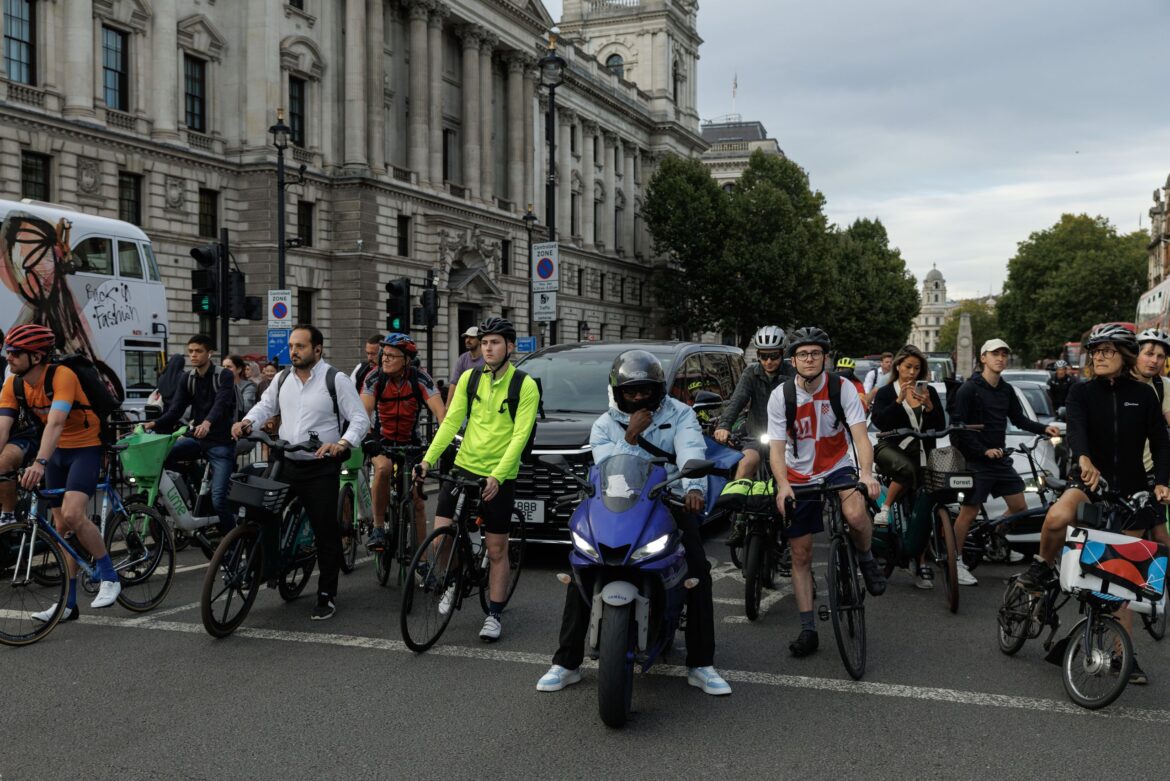It won’t come as a surprise to anyone pedalling through London’s streets of late, that it is more dangerous to cycle at rush hour on shared roads. But new research from University College London has offered more acute insight into this every-day truth.
Researchers studied video and audio collected from 60 commuter cyclists via a 360 degree GoPro mounted to their helmets to map the types of near misses they and where they happened. Over 317 hours of recording, 94 near misses were captured. The most common type of near miss? Close overtakes.
During those busy – and more dangerous – commuter hours, the safest path to take is down a dedicated cycle lane, or shared off-road path. Nevertheless, “where vehicles have to turn across the lane, or emerge from a side road and cross the cycle way conflict tends to happen,” Dr James Haworth warned.
The cyclists recruited for the study were told to shout “near miss” when one happened, triggering a pattern in their recordings the researchers could flick to.
The researchers found that the majority of incidents – 58 out of 94, or 62% – occurred during peak commuting hours, with 69 on roads without dedicated cycling infrastructure.
“The UK government generally uses casualty data to decide on targeting their priorities,” Prof Nicola Christie said, explaining the importance in using their findings as precursors to serious accidents.
“Near misses often resemble actual collisions – it’s a way of developing a kind of proactive safety culture around understanding cycling collisions and casualties.”
As cycling in the last 10 years has risen (by 39% in Great Britain), the number of those killed on the roads has decreased by nearly as much, to 82 deaths in 2024. However, during this same period, the number of those seriously injured rose by 16%. These injuries could be for myriad reasons – pot holes, collisions with pedestrians or other cyclists – all incidents that often go unreported.
“Our findings show that most near misses happen on roads without cycling infrastructure, and that junctions are particularly hazardous,” Prof Christie said.
“One thing that I find a little bit strange about cycling is that it is dominated by males,” Prof Christie said. “You think, ‘Well why are we not creating a cycling city that accommodates everybody?’ That’s something we need to ask and I think [it might be down to] the perceived safety of the infrastructure. I think we do need to understand a bit more about that with regard to the views of males and females.”
Dr Haworth, on the other hand, wants to better understand why cycling at higher speeds decreases the rider’s likelihood of being involved in a crash, or a near miss, and what happens to the statistics when all cyclists – including electric hire bike riders – are added to the mix.
Having evidence behind lived experience, matters. In 2014, Dr Christie was part of a research team that proved the danger heavy goods vehicles posed to the city’s cyclists. Now, all of these kinds of vehicles have sensors in their cabs, mirrors and blind spot sensors. When the team ran their most recent study into near misses, heavy goods vehicles accounted for none of them.
“Maybe we need to think more of that for cars and vans in the coming years,” Dr Christie continued. “If you live in London, there is a huge number of people who are delivering and working in vans. If you’re less than 12 tonnes, which is still quite a big vehicle, maybe we should have more of that equipment in vans to make it safer for everybody. If you place yourself in a blind spot and the driver can’t see you. It’s not a good situation for anybody.”
